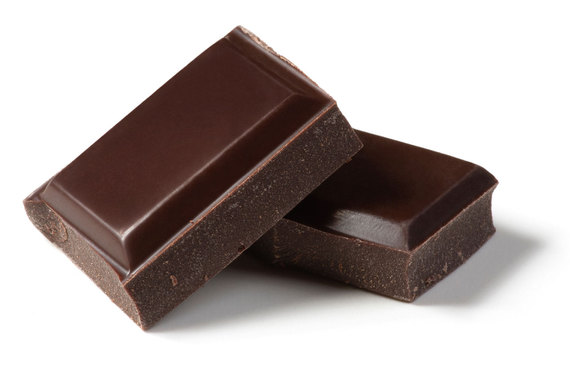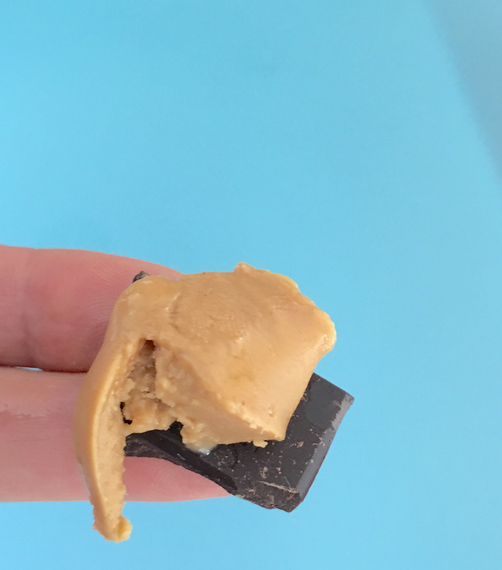
Who doesn't love chocolate? Chocolate is rich, creamy, sweet and complex in flavor! Just like a good bottle of wine depends on grapes and winemaking, chocolate depends on cocoa beans and processing. Chocolate connoisseurs are trending and the media says that chocolate is a health food. Is there more to this good story than meets the eye?
The media's claims about the health benefits of chocolate are based on studies funded by chocolate companies. Conclusions are based on extracted antioxidant compounds called flavonoids that occur naturally in cocoa beans, but may not be found in the processed chocolate that you are eating.
Flavonoids are a group of bioactive compounds associated with many health benefits. Flavonoids are common in many plant-based foods. Strawberries, blueberries, tea, apples and onions are excellent sources.
Chocolate is made from processing cocoa mass (or chocolate liquor) with sugar, cocoa butter and in the case of milk chocolate, added milk solids. Other ingredients may also be added. In order to obtain a high concentration of flavonoids, the chocolate must be made with a high concentration of cocoa nibs (from the inner kernel of the fermented, dried and roasted cocoa beans), which give chocolate its deep flavor and color.
- Unsweetened cocoa powder that is naturally processed (as opposed to Dutch-processed). After the beans are fermented, dried and roasted, the inner kernel - also referred to as cocoa nibs - are ground into a paste and the fat is pressed out. The remaining cocoa solids are pulverized into a fine powder. "Dutch" or European cocoa powders are processed with alkali, which reduces the flavonoid content.
- Very dark chocolate - 80 to 100 percent. To make chocolate, the cocoa nibs are ground into a liquid cocoa mass called chocolate liquor or cocoa mass, which encompasses the cocoa solids and cocoa butter naturally occurring in the nibs. Then sugar, extra cocoa butter and possibly other ingredients like lecithin (an emulsifier) are added. Package labels often state the percentage of cocoa in dark chocolate. However, it is misleading because the percentage combines the amount of cocoa mass and added cocoa butter. The flavonoid content varies widely depending on the factors outlined earlier.
- Milk chocolate is made with the addition of milk solids and generally contains more sugar. It has less cocoa solids, resulting in a low concentration of flavonoids.
- White chocolate is made with cocoa butter, milk solids, sugar, and other flavorings. It has no cocoa mass and no flavonoids.
 My favorite chocolate indulgence is a combination of half an ounce of 90 percent single-source organic dark chocolate with one teaspoon of natural organic peanut butter. This makes a good substitution for a peanut butter cup.
My favorite chocolate indulgence is a combination of half an ounce of 90 percent single-source organic dark chocolate with one teaspoon of natural organic peanut butter. This makes a good substitution for a peanut butter cup.
Ingredient labeling of chocolate is complicated. Many manufacturers mix cocoa beans from different countries as opposed to having a single source or variety. Often more cocoa butter is added during processing yet not listed on the label as an ingredient.
Conclusion: To make a blanket statement saying that chocolate is a health food is wrong. Until the federal government requires companies to list flavonoid content on the label, it is unscientific to say that there are health benefits related to consuming chocolate - even dark chocolate. Naturally processed, unsweetened cocoa powder, or 80 to 100 percent dark chocolate is going to be your best bet!
- Chocolate was originally a drink discovered by the Mayans of Central America as early as 600 AD. Cocoa beans (criollo variety) were treasured and used as currency in many parts of Latin America until the 19th century.
- Similar to how cocoa beans are processed today, they were harvested, fermented, dried and roasted. After shells were removed, the rest (nibs) was ground into a paste. The paste was mixed with hot water and spices. The mixture was poured back and forth between two containers to froth.
- Chocolate made its way to Spain and then England. In 1657, the first chocolate house opened in London - a place to sip chocolate and play cards. It was a stimulating drink because of the naturally occurring caffeine.
- Europeans started plantations in their overseas colonies with a new variety of cocoa bean called forastero, which is not as tasty. Today, 90 percent of cacao is forastero.
- In the 1700s, various mechanical inventions changed the fundamentals of the cocoa industry.
- Today 70 percent of all cocoa beans come from West Africa and central Africa.
- Note that the words cacao and cocoa are often used interchangeably.